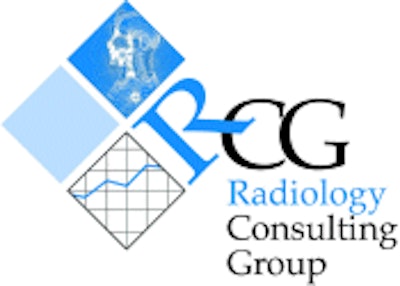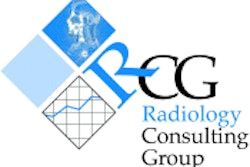
Radiology Consulting Group

Yet without effective training programs, the net gain for both the user and the organization can be limited, or even nonexistent. It's in the best interests of vendors, purchasers, and users to invest in the development of effective training programs.
Unfortunately, training in radiology is often piecemeal at best, and performed when absolutely necessary. Only rarely does training occur in the context of a uniform program with defined goals, structure, and accountability. Yet successful training programs in other industries are easily adapted to the radiology environment. Such programs typically have seven basic components.
Interviewing
The training process begins at the interview. The interviewer’s needs and training requirements must be clearly communicated to the prospective employee. Discussion of the training process illustrates the level of commitment that the organization has to helping the new employee adapt and succeed. It also makes the selection process more focused and deters candidates who do not qualify or who would not be committed to the training process.
Orientation
It's tempting to rush an employee through an orientation, or put it off completely -- especially in a department that's already understaffed and overworked. Such short-sightedness is akin to excluding the introductory chapter of a book. Without orientation, new employees aren't sure what is expected of them, and existing employees don't know what to expect of the new employee.
The orientation program should reflect the department’s collective goals, mission, and values. It should be a platform from which to introduce the training structure and review process in more detail. Essentially, the new employee should gain a general understanding of the environment they are going to become a part of, and learn what to expect next. The information at orientation should not be totally foreign to them. The basic principles should have been communicated during the interview.
Precepting
The character of a department’s training program is defined by its trainers in the same way that the character of a department is defined by its employees. A preceptor is an individual who takes on the role of the trainer and mentor for new employees. This individual should have undergone some training or received some information on precepting.
The preceptor should be familiar with the department’s procedures and protocols and be able to perform each task with a reasonable degree of proficiency. The preceptor should also be sensitive to what it is like to be a new employee. The preceptor should be selected for their interest in the program and their ability to communicate, not just their qualifications.
Of course, the new employee's success isn't the preceptor’s responsibility alone. Responsibility is shared by the manager, preceptor, and new employee, a process subject to review and open to feedback at any point. A good preceptor can't make an otherwise unmotivated or unqualified employee successful. But a good preceptor can motivate qualified individuals, and can be the reason behind their success.
Competency-based training
"Competency-based training" describes a seemingly simple concept: ensuring that an individual is adequately trained to successfully perform tasks and function as a productive member of the department. The latter is easy to state, but harder to put into action. A solid competency-based training program (CBTP) includes a number of components and characteristics.
First, a CBTP has checklists that include departmental priorities and reflect the variance within the department where appropriate. The checklists should be user-friendly, and multiple-choice exams should be considered. Checklists should also be regularly updated to reflect the current departmental training needs.
Second, a CBTP has its own internal review process that ensures that the checklists are adequately testing competence in a given task.
Third, a CBTP has a tracking mechanism that measures the use of the checklists as well as the strengths and weaknesses of the program.
Finally, a successful CBTP must reside within the structure outlined here.
Human resource review process
The review process is an effective mechanism by which training can be measured. The measures of performance should reflect the content of the competency checklists. This increases the objectivity of the review process and creates a self-sustaining system of accountability.
Good performance and motivation are rewarded; poor performance is identified and the employee is held accountable. Additionally, individuals are not held responsible for tasks and functions that they have not been trained to perform. A review that accurately reflects well-documented training material will be more likely to fairly review an employee’s job performance.
Updates and feedback
In order to be effective and reflect the needs of employees, a training program must be designed with a clear understanding of the target population. It must also provide a means of understanding how training positively and negatively effects that population and how the needs of that population can change.
Updating training material and receiving feedback from employees is essential for sustaining and measuring a training program’s success in radiology. In the analog environment, the need for training was somewhat static. In the digital environment, training needs evolve more quickly. Training programs must therefore be dynamic, and include plans to reinforce and support training.
Surveys are one way to ensure that the training program is meeting its objectives. Newly oriented employees and the administrators of the process, such as managers, preceptors, and human resource representatives, should all be surveyed regularly.
Objective factors can be developed to measure performance of the CBTP, including error rates, number of competency checklists completed in a given area, retake rates, and the integrity of data in PACS.
Exit interview
The exit interview is the employer’s last opportunity to speak to an employee and gather information. The feedback should be obtained in writing, and the process should be voluntary.
By Rania OmarAuntMinnie.com contributing writer
April 24, 2002
Omar is a training specialist with the Radiology Consulting Group in Boston.
Related Reading
Billing process review can reap revenue rewards, March 28, 2002
Voice recognition technology saves time, money, February 26, 2002
Budget monitoring reveals practice’s financial health, January 24, 2002
Creating a strategic patient safety agenda in radiology, December 28, 2001
Educational investment pays off in the radiology workplace, November 9, 2001
This story is part of a monthly series of practice management articles contributed by the Radiology Consulting Group in Boston. The ongoing series addresses topics and issues of concern to radiology administrators and business managers.
Copyright © 2002 Radiology Consulting Group


















